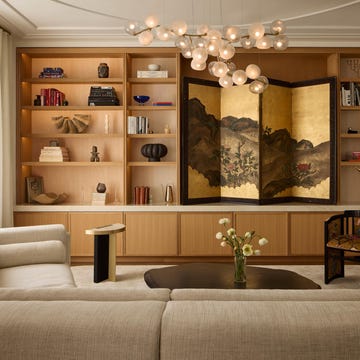It was post-structuralist thinker Michel de Certeau’s belief that an environment is like a sentence – individual places are the words, but it is when a person interacts with them that they gain meaning. If that is true, then this home by Studio Strata is more of a haiku: small, but packed with big ideas.
One of the architecture practice’s founding partners, Vincenzo Tattolo, introduced us to de Certeau’s concept of the ‘practiced place’ when discussing the inspirations behind Itaca House, which is located in a late-1960s brutalist building in Rome.
‘The way in which one chooses to live in a space also defines its characteristics and use,’ he tells us, explaining that this apartment’s unusual stepped layout is intended as a unique way to divide the open-plan interior, but also to offer its owners (a couple who are passionate about art, culture and architecture) a range of different perspectives on their own abode.
What's everyone reading?
‘The initial brief was for a home that was as free and open as possible,’ adds Vincenzo, who notes ‘we are living in a historical moment of great closure, with world events imposing greater separation between people and, consequently, between spaces’.
His aim was to counter that narrative by mirroring what he calls the ‘great openness’ of the property’s original ribbon windows and large terrace, carving out a ‘pure space at its centre’ containing the living room, kitchen, dining area and office. Here, different zones are defined not by walls (‘that very classic and bourgeois form of division’), but fluted-glass panels framed in wood that sit lightly within the layout, and subtle changes underfoot.
There’s reddish cocciopesto (a material made from crushed bricks or terracotta mixed with lime) on the floor in the living area, kitchen and dining space, while coconut-fibre carpets greet people as they enter. ‘The contrast we sought was not just chromatic, but also tactile,’ says Vincenzo, ‘hard or soft, cold or warm.’
This approach also extends to the choice of furnishings. The rigid quality of the Gae Aulenti coffee table counteracts the exaggerated plumpness of Mario Bellini’s ‘Camaleonda’ sofa – a choice that Vincenzo says stands in purposeful opposition to the ‘precision of the space’.
Where walls do remain, they have been transformed. Most are painted chalk white with an eggshell finish that enhances the light in the space. Some are clad in white slats that add movement to the flat surfaces. The site-specific artwork on the living room wall by Pietro Ruffo, a longtime friend of Vincenzo, is the most striking, though. Working with the idea of constellations, it was informed by information the artist gathered from the owners. It is important, adds Vincenzo, not just because of its personal resonance, but because it helps to ‘dematerialise’ the largest structural element in the space.
‘In such a rigorous interior, it adds a dreamy moment that is essential,’ he explains. What is it like to live in such a high-concept home? ‘Perhaps the most interesting aspect is that, little by little, they have taken ownership of the spaces and now live in them in ways we hadn’t imagined,’ says Vincenzo. ‘It’s always nice to return to a designed home after some time and see how it has evolved.’ studiostrato.it



















